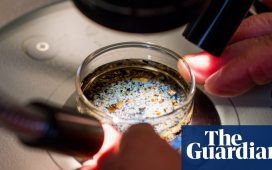Scientists are preparing plans to restore the fortunes of Scotland’s threatened Highland wildcats – by identifying and removing DNA they have acquired from domestic cats.
Researchers have warned that the Highland tiger, as the wildcat is also known, is critically endangered because it has bred so much with domestic moggies. All animals now bear evidence of interbreeding, and many have little “wild” left in them.
But by using modern genomics, scientists hope to reverse this process. Precise DNA maps of individual animals would be created to pinpoint those with high levels of wildcat genes. These will be bred with similarly endowed felines to create a new population, unaffected by domestic cat hybridisation, that can then be returned to the Scottish countryside.
“The process is known as de-introgression and it is the scientific equivalent of trying to unscramble an egg,” said Dan Lawson of Bristol University, who is the genomics leader for the project.
“We have animals with a mix of two sets of genes. Now we want to separate those sets and recreate Scotland’s original wildcat population.
“It won’t be easy but the benefits will be considerable, not just for wildcats but for other endangered species that are being swamped, genetically, by similar animals.”

British moggies are derived from the African wildcat Felix lybica and tend to be smaller – and friendlier – than Felis silvestris, the European wildcat, from which the Scottish version is descended. Domestic cats moved into Europe as agriculture spread to the continent from the Middle East, and by Roman times they were established in Britain.
The two species kept apart with little interbreeding for centuries, research has indicated. Wildcats have an aversion to humans while domestic cats find us moderately tolerable and occasionally useful. But that separation was eroded as the effects of loss of habitat, road accidents and spreading domestic cat populations accumulated, leading to a slump in wildcat numbers in the 20th century.
“There were few places for the wildcat to hide, and survivors began to interbreed with domestic cats that had gone feral, producing hybrid offspring,” said Jo Howard-McCombe, a conservation geneticist at the Royal Zoological Society of Scotland in Edinburgh.
“However, that interbreeding only happened in earnest in the 1960s, after we’d established captive populations of wildcats in Scotland. So animals that had been taken to zoos and sanctuaries were not too badly affected by hybridisation. Conservationists got there just in time.”
Using the descendants of these animals, a wildcat restoration programme, Saving Wildcats, was set up and this summer arranged for the release of 19 animals into a 600 sq km section of the Cairngorms national park known as Cairngorms Connect.
Fitted with GPS collars, each animal is tracked to study how it copes with life in the wild, and the onset of winter in Scotland. A further 40 animals are set to be released over the next three years.
“Wildcats survive on rabbits, mice, voles and occasional birds and hares. So far, our cats are doing well, though one has died from an abdominal infection,” said Helena Parsons, a manager for Saving Wildcats.
Wildcats breed in December and January, with litters born in spring or early summer. “We are not expecting our cats to have kittens next year – they need time to get used to life in the wild. On the other hand, it would be fantastic if we did get a litter or two,” said Parsons. “GPS data shows some of the cats have met up over the past few months.”
A critical feature of Saving Wildcats is to keep feral and domestic cats away from their release area, said Parsons. “We have over 100 camera traps out there, and every time we spot a cat we try to find out if it is a domestic one. If it is, we try to trace its owner and ask if it has been neutered. If it’s feral, we try to find it and get it sterilised.”
The animals used for the Saving Wildcats programme were bred at a special centre, at the Highland Wildlife Park near Kingussie, using wildcats from zoos and wildlife parks across Britain. Stud book records and genetic tests suggest these have high levels of wildcat genes. Nevertheless, all are affected to some degree by hybridisation with domestic cats.
It is the goal of the de-introgression programme – for increasing wildcat gene levels – to add an extra boost by exploiting the power of modern genomics. However, the project will not be a quick or an easy one, said programme scientist Prof Mark Beaumont of Bristol University. “The idea would be to have funds to monitor what is happening in the kittens as you progress, and that costs money. A whole genome of an individual cat sets you back about $200.”
This point was backed by Lawson. “It will take 10 to 20 generations of careful breeding and genetic analysis to recover the complete wildcat genome,” he told the Observer. “That poses all sorts of problems, not least financial. But we’re applying for money to start. We should be clear: the breeding programme is our last chance to save the Scottish wildcat.”











